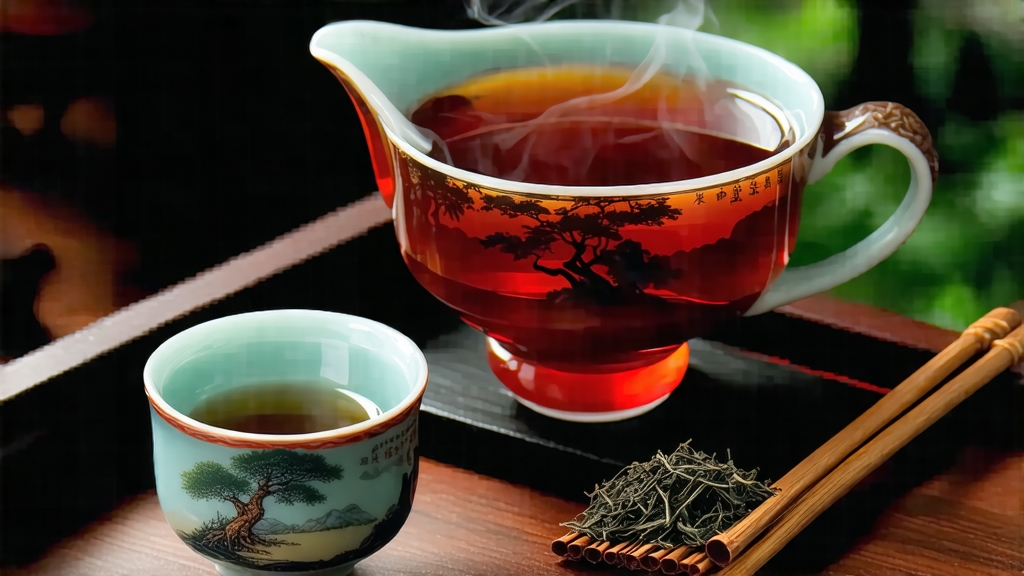
When Chinese tea lovers speak of “rock bone and floral fragrance,” they are invoking the spirit of Da Hong Pao, the most celebrated oolong from the mist-wrapped Wuyi Mountains of northern Fujian. Literally “Big Red Robe,” the name alone evokes imperial legend: a Ming-dynasty scholar, cured by this tea, draped the bushes in crimson silk to honor their life-saving power. Whether myth or marketing, the story hints at the reverence this tea has commanded for over three centuries, and why today it remains the benchmark for yan cha, the “cliff teas” grown in the 60-kilometer-long volcanic gorge known as the Nine-Dragon Valley.
Geology is the first ingredient. The Wuyi range is a UNESCO geopark where granite cliffs plunge into the Jiuqu Xi (Nine-Bend Stream), creating a humid microclimate that alternates between fog and short, intense bursts of sunlight. The soil is a mineral-rich mix of weathered tuff and red sandstone; rain trickles through these porous layers, picking up calcium, magnesium, and iron that the old tea trees absorb through slow, deep roots. The result is a liquor that tastes literally of stone—what locals call yun, a lingering coolness that feels like licking wet slate.
Da Hong Pao is not a single cultivar but a stylistic family. The original “mother trees,” six ancient bushes clinging to a cleft called Jiulong Ke, have not been harvested since 2006 when the Chinese government protected them as living cultural relics. Most drinkers encounter commercial grades blended from three authorized clonal descendants: Qidan (purebred), Beidou (northern star), and Que She (sparrow tongue). Each clone preserves part of the mother-tree genome yet expresses different aromatics: Qidan leans toward ripe peach and orchid, Beidou shows roasted almond and charcoal, while Que She offers a sharper, citrus-peel edge. Beyond these, hundreds of small farms craft “commodity DHP” from the regionally popular cultivars such as Rougui (cassia) and Shui Xian (narcissus), adjusting the firing schedule to mimic the deep, complex cup of the true rock tea.
Crafting Da Hong Pao is a month-long negotiation between moisture, heat, and time. Picking begins in late April when the standard “open face” leaf—three or four half-mature leaves with a 4–5 cm stem—has lost its grassy bite. The first step is solar withering: leaves are spread on bamboo trays under the morning sun for 20–30 minutes, just long enough to soften cell walls without bruising the edges. They are then moved indoors to wither on racks for another 6–8 hours while mountain breeze lowers the moisture to roughly 65 percent. What follows is the most labor-intensive phase, yaoqing: the leaves are shaken in wicker tumblers every hour, a gentle bruising that initiates oxidation at the edges while the center stays green. Masters listen for a rustling sound like rain on silk; when the leaf margins turn reddish-brown and the aroma shifts from cut grass to ripe pineapple, oxidation is arrested with a 260 °C tumble in electric woks for three minutes. This kill-green step locks in the signature green center–red edge leaf that Chinese graders prize.
The tea is now mao cha, rough tea, still too grassy to drink. The soul of Da Hong Pao emerges in the two-stage charcoal roast that begins after a week of rest. Traditionally, the leaves are loaded into 50 cm diameter bamboo baskets suspended inside a shallow pit of glowing embers from the local hardwood longan or lychee tree. The first firing lasts 8–10 hours at 80–90 °C, driving residual moisture down to 7 percent and fixing the amber color. After a fortnight of re-absorption, a second firing at 60–70 °C for 12–14 hours deepens the cup, layering cocoa, toast, and a faint smokiness that never overpowers. A third, even cooler firing may follow for premium grades, each round reducing water activity so the tea can age gracefully for decades. When finished, 4 kg of fresh leaf have become 1 kg of jet-black, twisted strips that smell of burnt caramel and mountain orchid.
To unlock those aromatics, gongfu brewing is less ritual than precision engineering. A 120 ml gaiwan or small Yixing zisha teapot seasoned only with rock teas allows leaf-to-water ratios of 1: